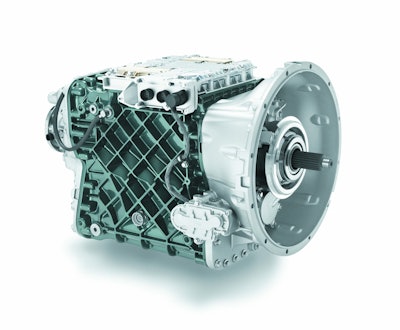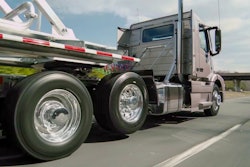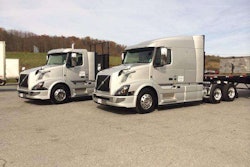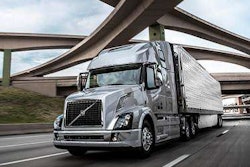 Volvo’s I-Shift transmission
Volvo’s I-Shift transmissionIn August, Volvo announced its latest fuel saving technology, Adaptive Gearing, which is, once again, based around the company’s versatile I-Shift automated manual transmission. This week, I was with Volvo at the company’s North American Class 8 truck plant in New River Valley, Va., to check out this new fuel enhancement concept and see additional 2016 VNL features.
According to Volvo product manager Jason Spence, the new features, both inside and outside of the truck, reflect lessons the company learned from its participation with the government-sponsored Super Truck research program and has since put into production.
The vaunted VN Series of tractors helped kick off the aerodynamic push in North America. And although it began life as an already slippery design, Volvo’s engineers have managed to finagle another 3.5 percent fuel economy boost out of it thanks to a host of refined airflow features, including a new bumper and tractor side fairings.
Under the hood, Volvo has managed to squeeze another 2 percent fuel economy boost out of its XE integrated drivetrain. The brains of the XE drivetrain is Volvo’s feature-packed I-Shift AMT, which the company says is now going out the door on 74 percent of all new trucks it has sold this year. Given the flexibility this AMT offers Volvo, it is not surprising to hear Volvo is now moving away from “one size fits all” powertrain offers and drilling down into customer needs to offer more application-focused drivetrains.
And that’s the kind of thinking that led the company to the concept of Adaptive Gearing.
The concept is actually pretty simple: building on the already-formidable sensory and computing power offered by the I-Shift, Volvo engineers have added load-sensing EMCs to the system. As a result, the XE drivetrain can now adjust horsepower and gear selection to match specific vehicle haul configurations and deliver either power or fuel economy on demand.
Spence says Adaptive Gearing is designed to benefit fleets that head out fully loaded and return home either much lighter or empty. When fully loaded, the XE drivetrain emphasizes torque and horsepower in order to insure that the load is moved in as efficient a manner as possible. Fuel economy remains important. But the priority is on available power.
One way this manifests itself is with a 12th gear lockout function, which makes sure the drivetrain stops shifting in 11th gear when the vehicle is fully loaded. Once the drivetrain senses that the vehicle is empty, it automatically opens 12th gear up to ensure the best possible fuel economy during the homeward cruise.
And while “Economy” is the default operational mode during highway cruises, drivers have the option at any time of shifting into “Performance” mode with the push of a button to deal with grades or anytime a burst of power is needed. Once the truck reenters cruise parameters, I-Shift automatically reverts to “Economy” mode.
It’s a slick system that builds on Volvo’s outstanding existing technology and offers tangible, real-world benefits to fleets, company drivers and owner-operators alike and makes an already-outstanding tractor that much better. Volvo took an early lead in the push for better heavy-duty truck fuel economy with the launch of the VN tractor. And the latest enhancements I reviewed this week make it clear that’s a position the company has no intention of surrendering any time soon.











